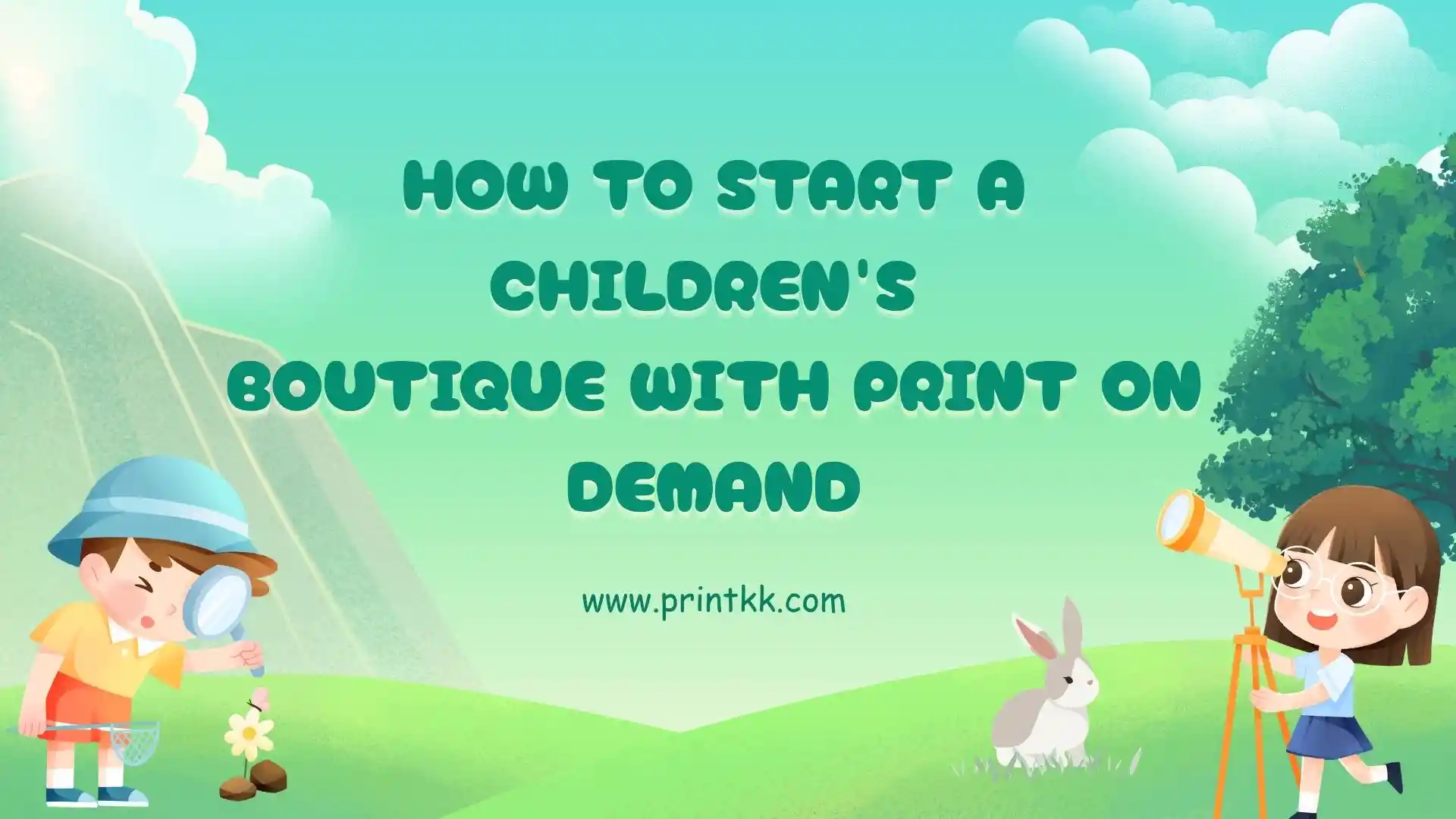
Starting a children's boutique might feel like a big leap, but it doesn't have to be overwhelming.
Knowing how to start a children's boutique means thinking beyond just racks of clothing—you're creating a space, online or in-store, that connects with both kids and parents.
Print-on-demand makes it possible to test designs, offer unique products, and manage inventory without large upfront costs.
In this guide, you'll see what works in real-world boutiques, how to choose the right products, and practical ways to set up your store so that it runs smoothly from day one.
Why to Start a Children's Boutique?
Starting a children's boutique can be an exciting way for you to turn creativity into a business.
The global children's dress market is projected to reach US$16.33 billion in 2024, which shows there is a huge demand for kids' clothing.
Parents are always looking for unique and stylish outfits for their little ones, and you can fill that gap with your boutique.
One big advantage is that this market keeps growing. The main drivers are the increasing child population and rising consumer spending.
More children mean more customers, and parents today are willing to spend more on quality and cute clothing.
When you start your boutique, you also get flexibility. You can:
- Test fun and trendy designs with print on demand
- Run your shop online without huge upfront costs
- Offer personalized items that make parents excited to shop
By combining a growing market with your own creative ideas, starting a children's boutique is not just fun—it's a smart way to build a business that can grow with the trends.
With the market expected to grow at a CAGR of 6.2% between 2025 and 2030, now is a great time to step in and make your mark.
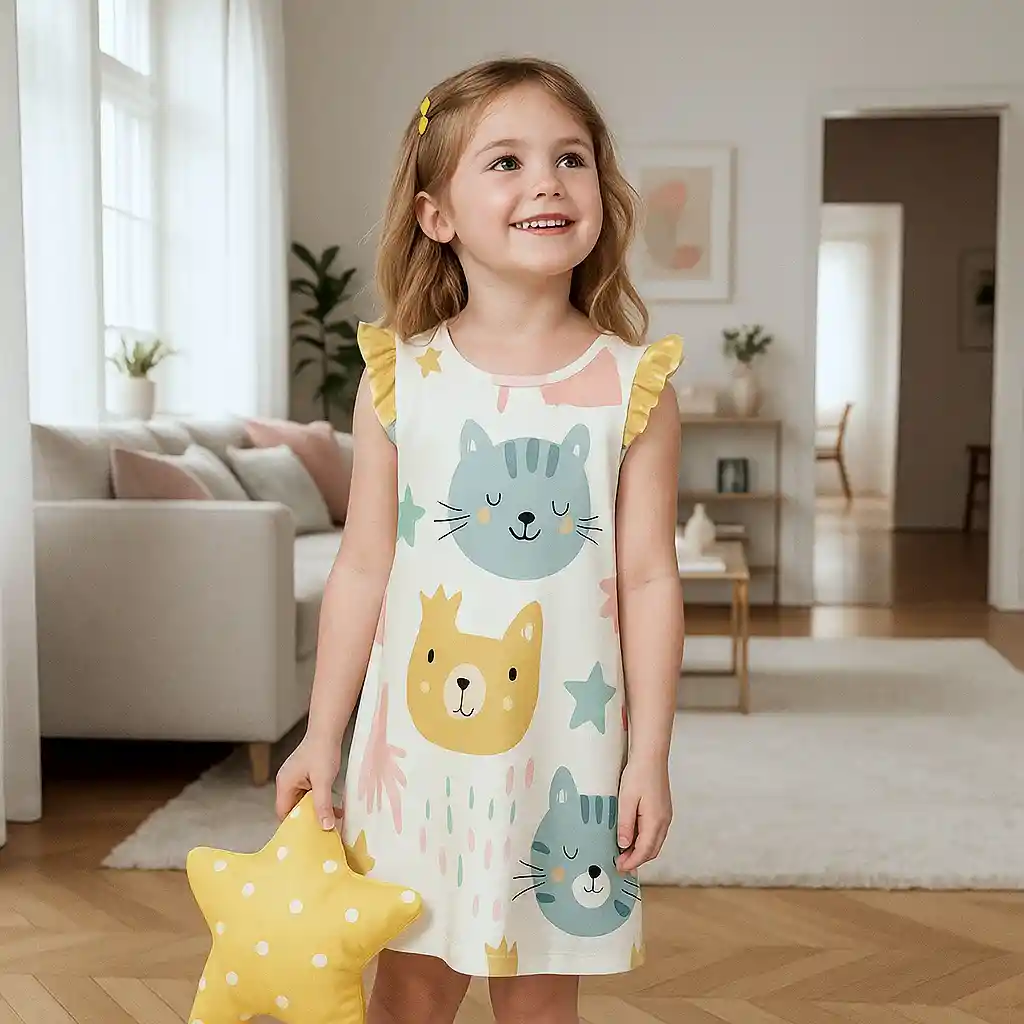
Custom Printed on Demand Girl's Flutter Sleeve Nightgown - Kids' Clothing - PrintKK
How Much Does It Cost to Start an Online Children's Boutique
When you think about opening your own online children's boutique, the cost can feel confusing. How much you spend depends on the approach you take.
Here's a look at two main ways: print on demand and traditional inventory.
1. Using Print on Demand
Print on demand lets you start small without tying up a lot of money in products. You pay for items only after a customer orders them. That keeps your startup costs low and lets you test ideas before committing.
Here's what you'll likely spend on:
- Designs and mockups – creating your unique prints for clothing, accessories, or toys.
- Store setup – website fees, Etsy, or other platforms.
- Samples – a few products to check quality and take photos.
Starting with print on demand, you could spend around $100 to $300, depending on how many designs you make and the platform you choose.
The advantage is you can experiment freely. If a design doesn't sell, you haven't lost much money.

Custom Printed on Demand Pajama Sets for Kids Crew Neck Short Sleeve - Kids' Clothing - PrintKK
2. Traditional Boutique
If you go the traditional route, costs add up faster because you have to buy inventory before making a sale. You also need space to store products and supplies for shipping.
Things to budget for:
- Bulk inventory – kids' toys, shoes and accessories.
- Storage and shipping supplies – boxes, tape, packing materials.
- Branding and marketing – photos, packaging, website setup.
Starting this way could cost $1,000 to $5,000 or more. You get more control over your products, but the risk is higher. Unsold items can tie up your money and take space.

Custom Printed on Demand Wooden Jigsaw Puzzles 300 pcs (Horizontal) - Games & Crafts - PrintKK
How to Start a Children's Boutique With Print on Demand
1. Pick Your Niche & Dream Up Your Designs
Before anything else, get specific about who your boutique is for. Are you creating playful animal prints for toddlers, cool graphic tees for school-aged kids, or unique sibling sets?
Think about the styles, colors, and themes that make your boutique special. This focus helps you create designs parents and kids will love.
Brainstorm ideas that tell your boutique's story – maybe it's nature-inspired, space-themed, or all about kindness messages. Your unique designs are what will make your shop stand out.
2. Choose Your Print-on-Demand Partner Wisely
Not all print-on-demand services are created equal, especially for kids.
You need a partner that offers a great range of children's clothing options – think comfy bodysuits, toddler tees,kids' hoodies, and maybe even matching parent items.
Crucially, they must use safe, non-toxic materials and inks suitable for sensitive young skin. Research companies like PrintKK or Teelaunch – check their kidswear quality, item variety, and shipping times. Read reviews from other kids' boutique owners.
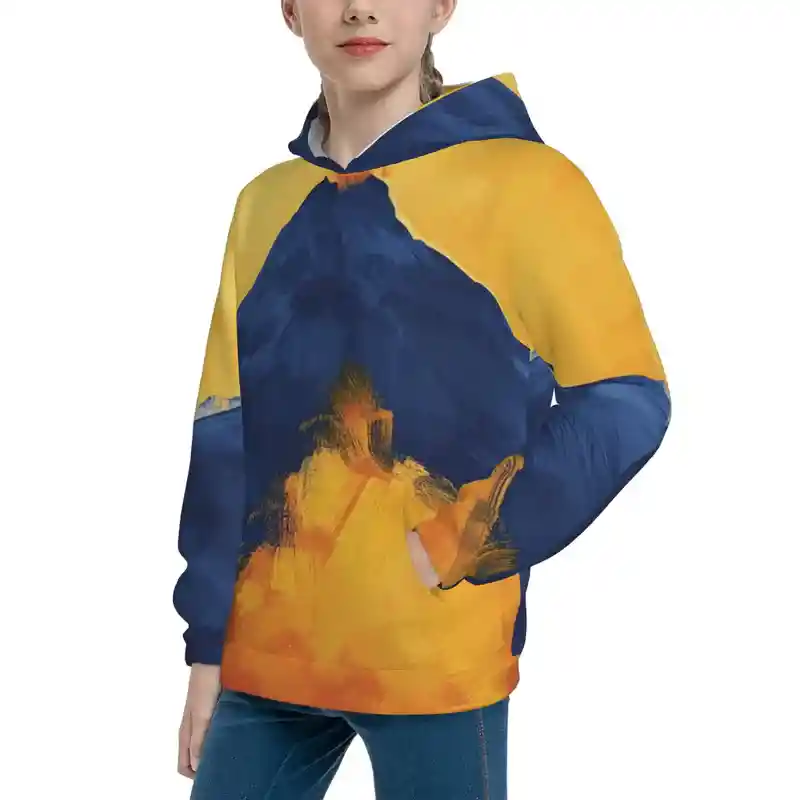
Custom Printed on Demand Youth Hooded Sweatshirt (AOP) - PrintKK
3. Build Your Online Storefront
This is your virtual shop window. Platforms like Shopify, Etsy, or WooCommerce are popular choices because they work smoothly with print-on-demand apps.
Make your store look inviting and trustworthy. Use clear, bright photos (even mockups before you launch), write friendly product descriptions that highlight the design and comfort, and create an easy-to-navigate layout.
Parents should feel confident browsing and buying for their little ones. A clean, professional-looking store builds trust.
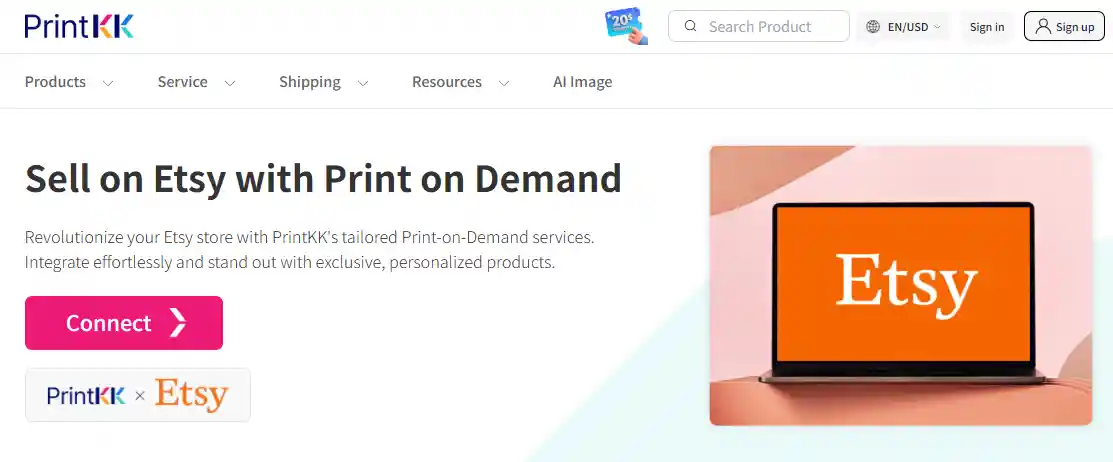
4. Design Upload & Product Setup
This is where your ideas become real products. Using your chosen POD platform's design tool, upload your artwork files.
Carefully place your design on each product type (a bodysuit needs different placement than a t-shirt).
Pay close attention to sizing guides provided by the POD company – kids sizing varies wildly between brands.
Set your prices thoughtfully, factoring in the POD base cost, your profit, and what parents are willing to pay for unique, quality items.
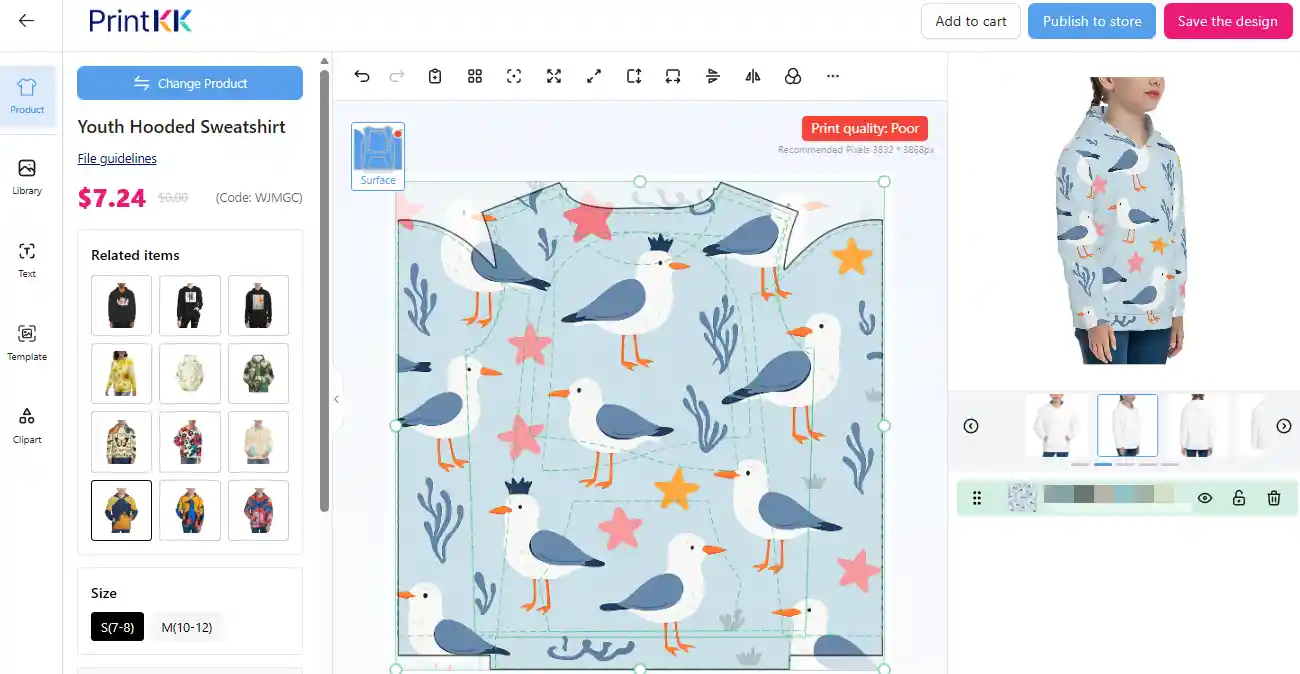
5. Order Samples (Non-Negotiable.)
Never skip this step. Order samples of your actual designs printed on your chosen items. You must see and feel the final product.
Check the print quality – are the colors vibrant and accurate? Is the print durable? Feel the fabric – is it soft and comfortable enough for kids? Test the sizing – does it run true?
This hands-on check ensures the quality meets your standards before you sell to customers. It prevents unhappy surprises later.
6. Create Stellar Product Listings
Your online listings need to sell your vision. Use high-quality mockup images showing your designs on different kids (or use diverse child models later).
Write clear, engaging descriptions that talk about the design inspiration, the soft fabric, and the perfect fit. Include detailed size charts (referencing the POD provider's chart is key.) and care instructions.
Think about what a busy parent needs to know to confidently click "buy." Great photos and descriptions are your best sales tools online.
7. Spread the Word & Connect
Now it's time to find your customers. Share your unique children's wear on social media platforms popular with parents (like Instagram or Pinterest).
Show real kids wearing your clothes (with permission), share your design process, and talk about what makes your boutique special.
Consider partnering with parent bloggers or family-focused influencers. Build a community around your brand – engage with people who comment or message you. Authentic connection helps build a loyal following.
8. Focus on Customer Happiness
Your service is just as important as your cute clothes. Be prepared to answer questions about sizing, materials, and shipping times promptly and kindly.
Have a clear, fair return policy for damaged or incorrect items. When orders ship, send friendly confirmation emails. Encourage happy customers to leave reviews or share photos.
Building a reputation for great products and great service is how you turn first-time buyers into repeat customers who recommend your boutique to friends.
Start a Children's Boutique Both Online and Offline
Starting a children's boutique can be done both online and offline, giving you more flexibility and a wider reach.
Before signing a lease, it's important to talk to a commercial real estate agent to understand rent costs, because retail businesses often live and die by their location.
You also need to think about suppliers and pricing, as sourcing the right products will be key to your success.
When planning your boutique, consider the main expenses:
- Rent or lease for a physical space
- Product costs and supplier pricing
- Staff and time investment
Having these numbers helps you see if your idea is realistic and profitable.
You can also poll potential customers—friends, parents, or community members—to see which items they like and what price points feel right. This feedback is invaluable when shaping your inventory.
Running a boutique offline is rewarding, but pairing it with an online presence is smart. An online store lets you:
- Reach customers beyond your town
- Test new designs or print-on-demand products without extra overhead
- Offer convenient shipping and gift options
By planning carefully, combining both online and offline strategies, and using your local connections for insights, you'll give your children's boutique the best chance to thrive.
A solid business plan and clear budget will make it easier to attract funding and grow your store successfully.
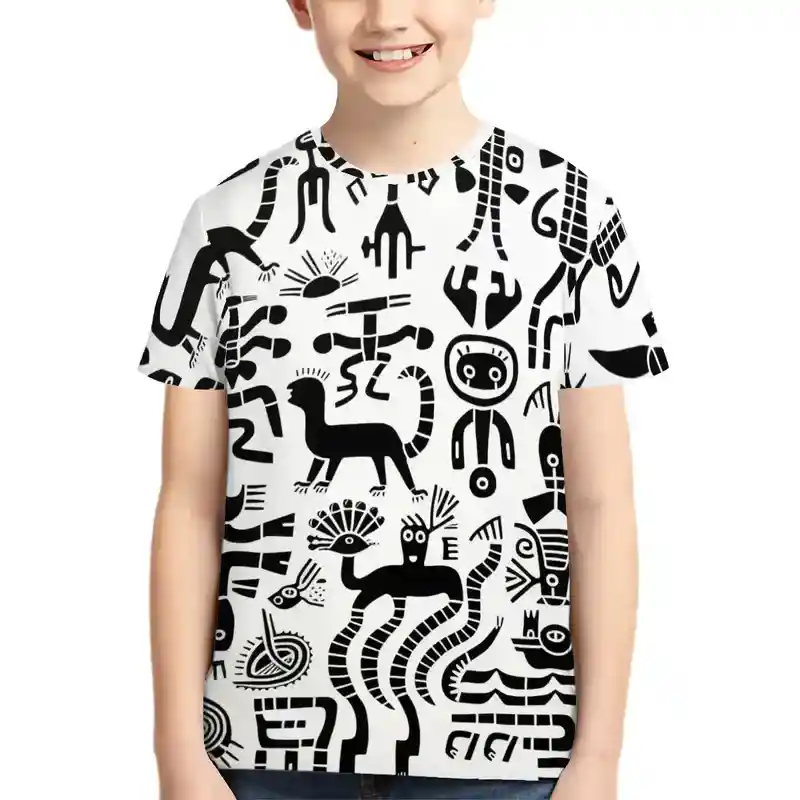
Custom T Shirts for Teens (Overall Design) - Print on Demand Fulfillment - PrintKK
Tips to Promote Children's Boutique on a Budget
1. Understand the Power of Budget Marketing
Running a children's boutique can be competitive, but you don't need a huge budget to attract customers.
The key is to reach the right people and build trust. With smart planning, even low-cost strategies can quickly bring attention to your store.
2. Leverage Local Parent Communities
Parents are your most targeted customers. Join local mom groups, community forums, or school chat groups.
Share helpful tips, small discounts, or seasonal gift ideas. For example:
- Offer holiday gift packs
- Invite families to try outfits at your store
This creates goodwill and gets your boutique noticed naturally.
3. Collaborate with Micro-Influencers or Parenting Bloggers
Small local bloggers are highly trusted by parents and usually affordable to work with. Look for influencers with 500–5,000 followers. You can:
- Send them products to try
- Ask them to post photos or reviews
- Offer unique discount codes to track sales
This approach spreads the word without breaking the bank.
4. Keep Social Media Simple and Consistent
Focus on platforms like Instagram, Facebook, Pinterest, or TikTok. Post 2–3 times a week with:
- New arrivals or outfit ideas
- Sale announcements or special events
- Stories showing behind-the-scenes or try-ons
Use natural light and clean backgrounds. Encourage interaction with polls, questions, or giveaways.
5. Host Small Local Events or Pop-Ups
Local events build trust quickly. You could set up a Pop-Up Store at:
- Community centers
- Weekend markets
- Shopping malls
Add holiday themes like Children's Day or Christmas, and create fun photo spots to encourage sharing on social media.
6. Encourage Customer Engagement and Sharing
Parents trust other parents. Ask customers to post pictures of their kids wearing your products and tag your boutique. Offer small rewards like:
- Discounts on next purchase
- Gift items
- Loyalty points
This turns your happy customers into your best promoters.
7. Use Budget-Friendly Advertising
You can still advertise effectively without spending much. Options include:
- Low-cost digital ads: $5–10/day on Facebook or Instagram, targeting local parents
- Offline promotions: community bulletin boards, school flyers, or sponsoring kids' events
Small, focused ads often give better results than large, untargeted campaigns.
Expert Tips
Starting your own shop may feel overwhelming, but print on demand makes it easier.
You don't need a lot of money or inventory to begin. You can focus on designing products, setting up your store, and connecting with customers. Understanding your audience and testing ideas will help you grow.
By planning carefully and using POD tools, you can create a boutique that works for you. Remember, learning and adjusting along the way is part of the process.
If you want to know how to start a children's boutique, start small, stay organized, and keep experimenting. Success comes from consistent effort and smart choices.
FAQs
Is a kids boutique profitable?
A children's boutique can be profitable if you carefully choose products, manage costs, and target the right audience. Local demand, quality items, and consistent promotion help increase sales and maintain steady revenue.
Do I need an LLC to start a boutique?
You don't have to form an LLC immediately, but having one can protect personal assets and make your business look more professional. Some owners start as sole proprietors and upgrade later when revenue grows.
What to sell in a children's boutique?
Focus on items parents and kids love. Popular options include clothing, shoes, accessories, small toys, party supplies, and sensory or creative activity kits. Seasonal or themed products often attract more attention.
How to create boutique for children with minimal cost?
Start small with print-on-demand products or secondhand items. Use online platforms to test designs before investing heavily. Combining online and pop-up sales can reduce rent and inventory expenses.










 Global Shipping
Global Shipping





























